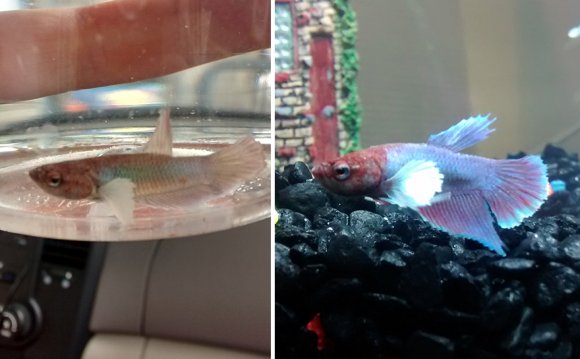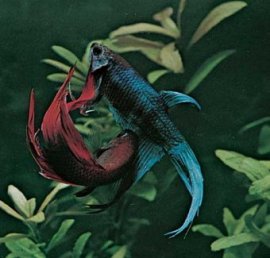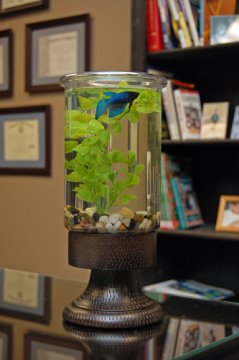
 This week Advocacy for Animals welcomes a new writer to the blog: Richard Pallardy, a research editor at EncyclopÃdia Britannica.
This week Advocacy for Animals welcomes a new writer to the blog: Richard Pallardy, a research editor at EncyclopÃdia Britannica.
There are some organisms that, by their very ubiquity, are prone to cause the human mind to perceive them collectively, rather than as individuals (think grass); thus they are reduced to object status. Even some higher life forms manifest to the human eye as infinitely interchangeable icons, one indistinguishable from the next. No better example of this phenomenon is there than the betta, or Siamese fighting fish (Betta splendens).
Hiding in plain sight
The betta is a stock character, an archetypal aquarium denizen only slightly less renowned than the goldfish. Perhaps that iconic similarity accounts in part for the condition in which many bettas are sold in pet stores around the world. The male betta’s well-earned reputation for interspecies aggressiveness precludes their being housed all in one tank, hence the reduced size of their accommodations. Never mind that the logical solution for pet store owners would be to house one male in each tank in the store, as bettas are compatible with most fish commonly found in mixed-species tropical community tanks. The simple ellipsoid shapes of the bettas, stacked individually in tiny plastic tubs, tessellate on the shelf like a bleak M.C. Escher drawing come to life. The pattern obviates for the casual observer any need to closely examine the components of the display: cups of murky water inhabited by lethargic, often diseased fish. The compact little tubs favored by pet stores just make for easy commerce: prepackaged fish for a prepackaged world.
 Poor husbandry
Poor husbandry
Several misconceptions about the betta account for the seeming acceptability of this practice. The betta is an anabantoid, or labyrinth fish, meaning that it has an organ that allows it to respire directly from the air at the surface in addition to breathing through its gills. Because of this, it is often claimed that the betta is inured to the low-oxygen conditions in the tub. That justification is often supplemented with the additional claim that the betta lives in puddles in its native habitat.
Though both assertions are true, neither provides justification for the current husbandry practices. The betta can breathe air and is therefore able to tolerate the water conditions and in the wild does live for part of the year in rather small pools. However, neither of these remarkable adaptations can aid bettas in combating disease, to which they become much more susceptible when kept in waste-filled containers. The water in the little cups is almost never filtered, and the frequent water changes necessary to make such environs habitable are time consuming, ensuring that they are performed rarely.
Online forums devoted to discussing this problem seem divided on how best to approach it, some advocating the purchase of bettas in order to save them, and others preferring to boycott stores where they are sold in poor condition. A few suggest more creative [read: illegal] tactics such as returning a dead fish for a healthy one, then keeping the corpse and “returning†it again while others advise outright shoplifting. Guerrilla tactics aside, there are some realistic ways to improve the lot of an ill-treated betta.









